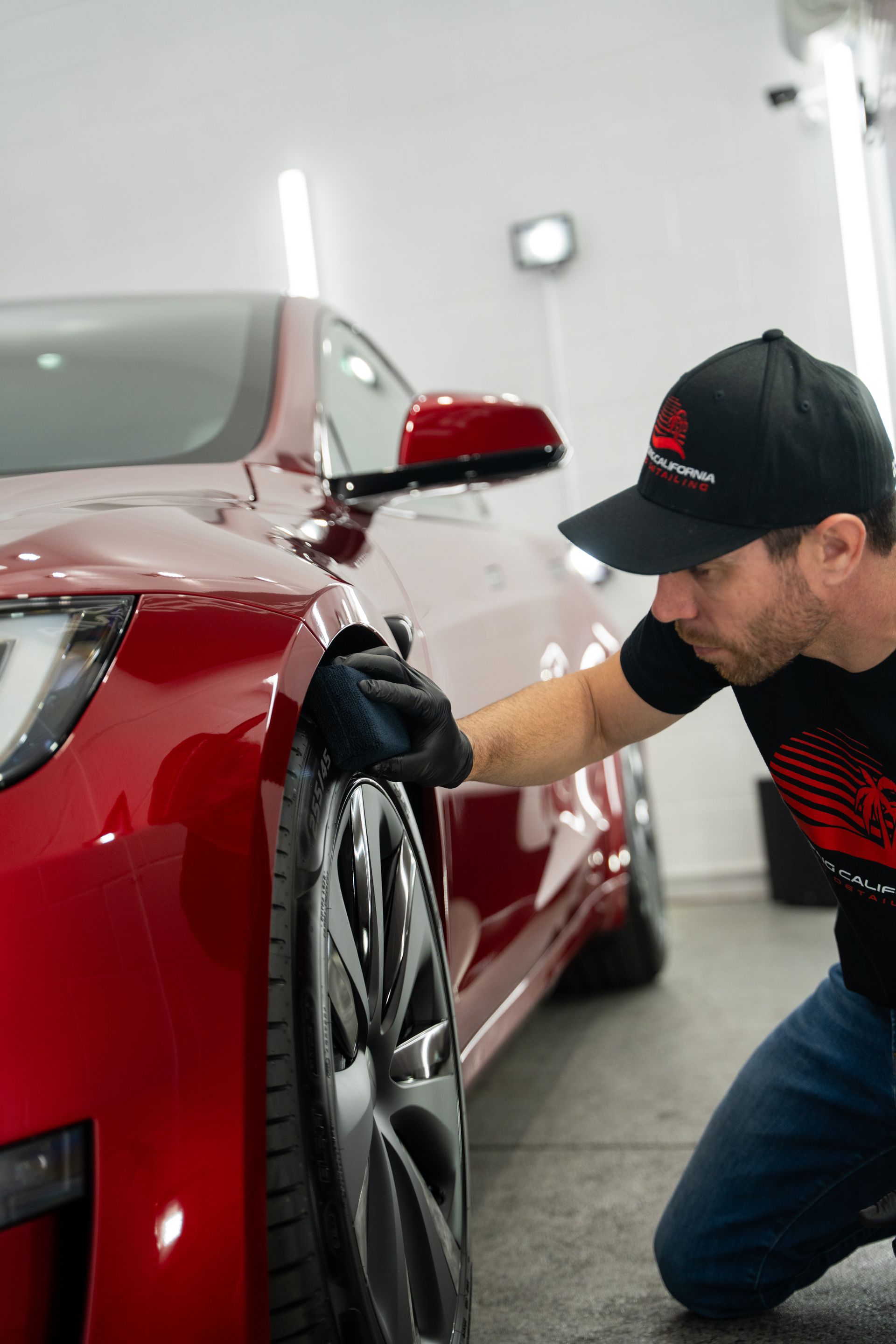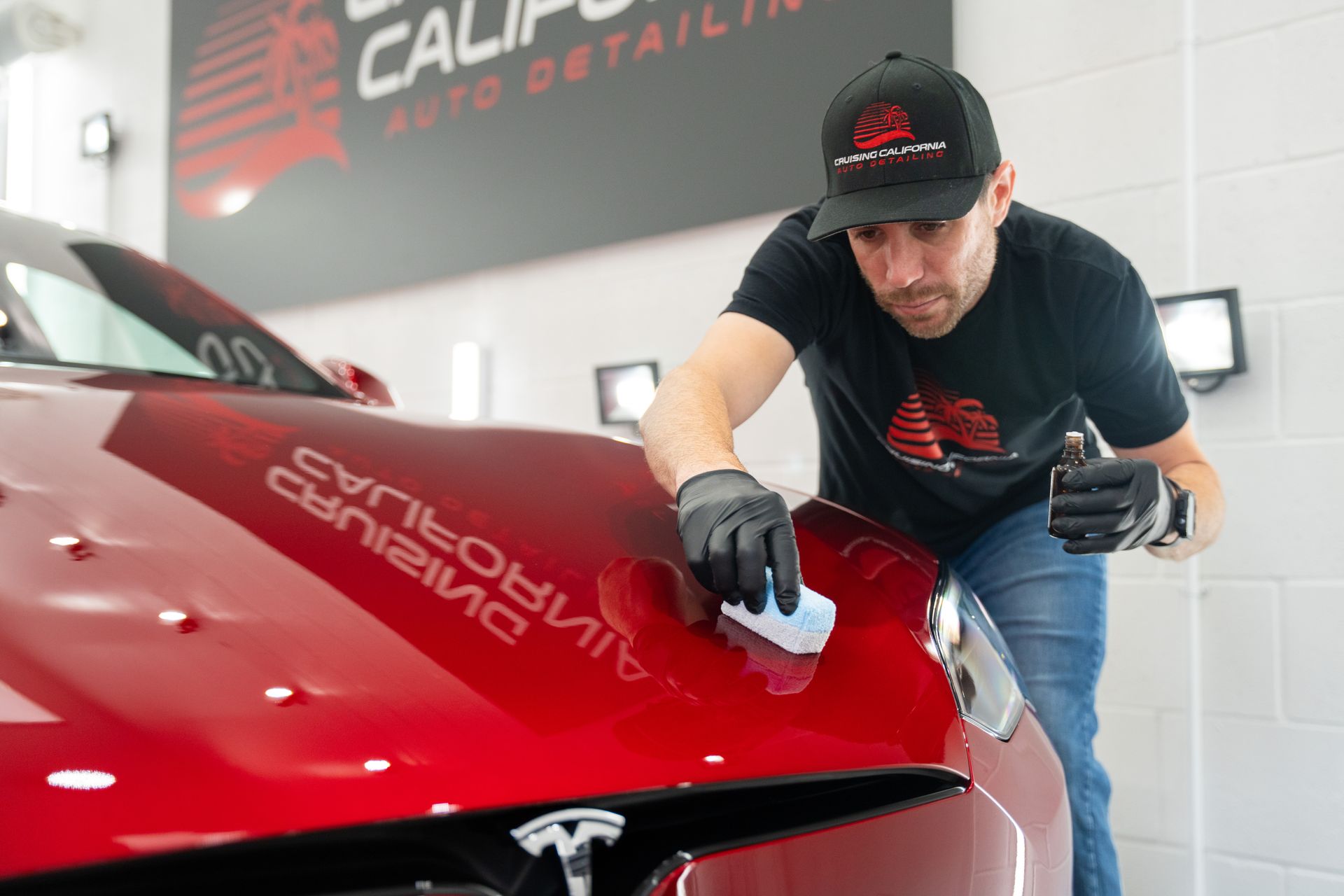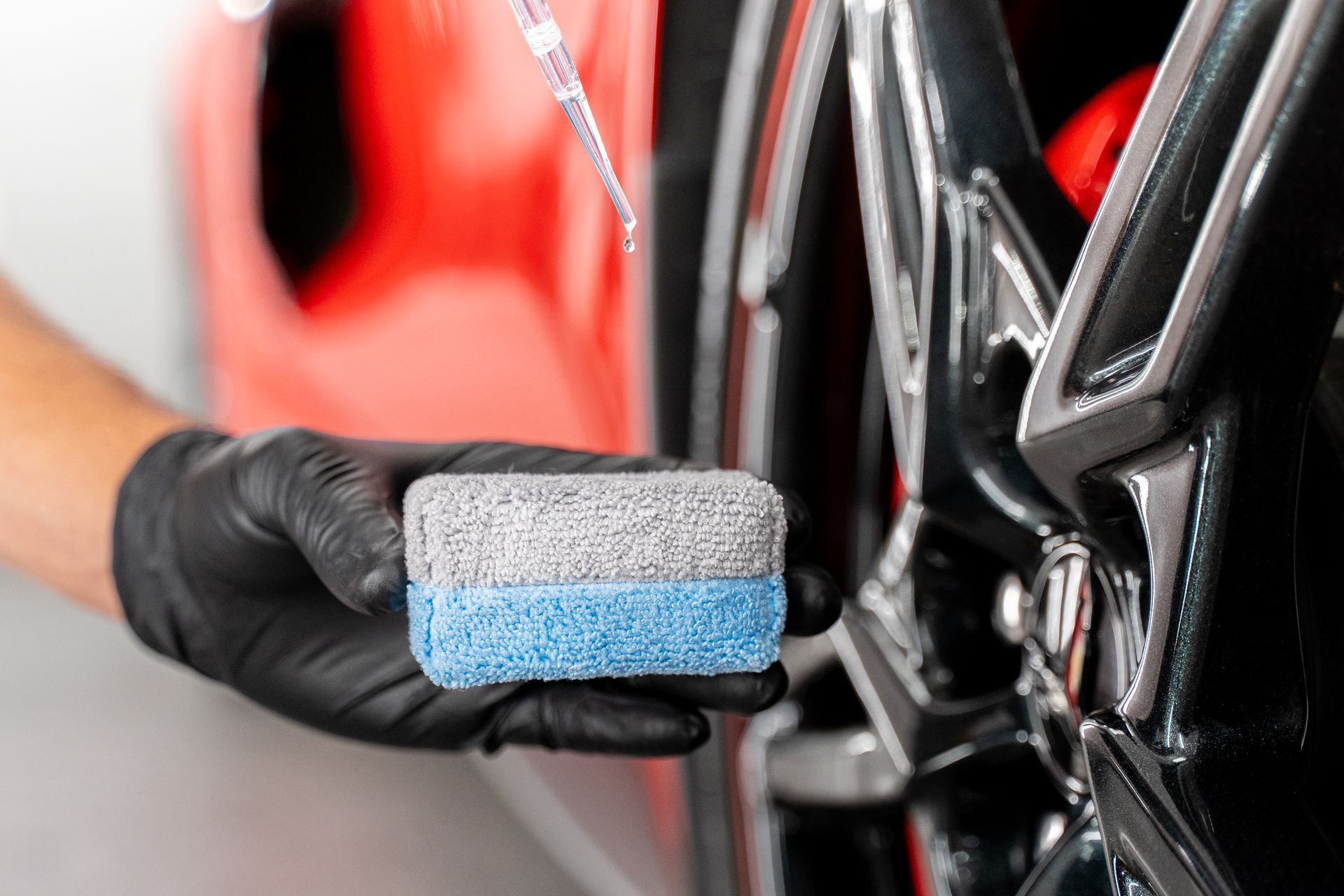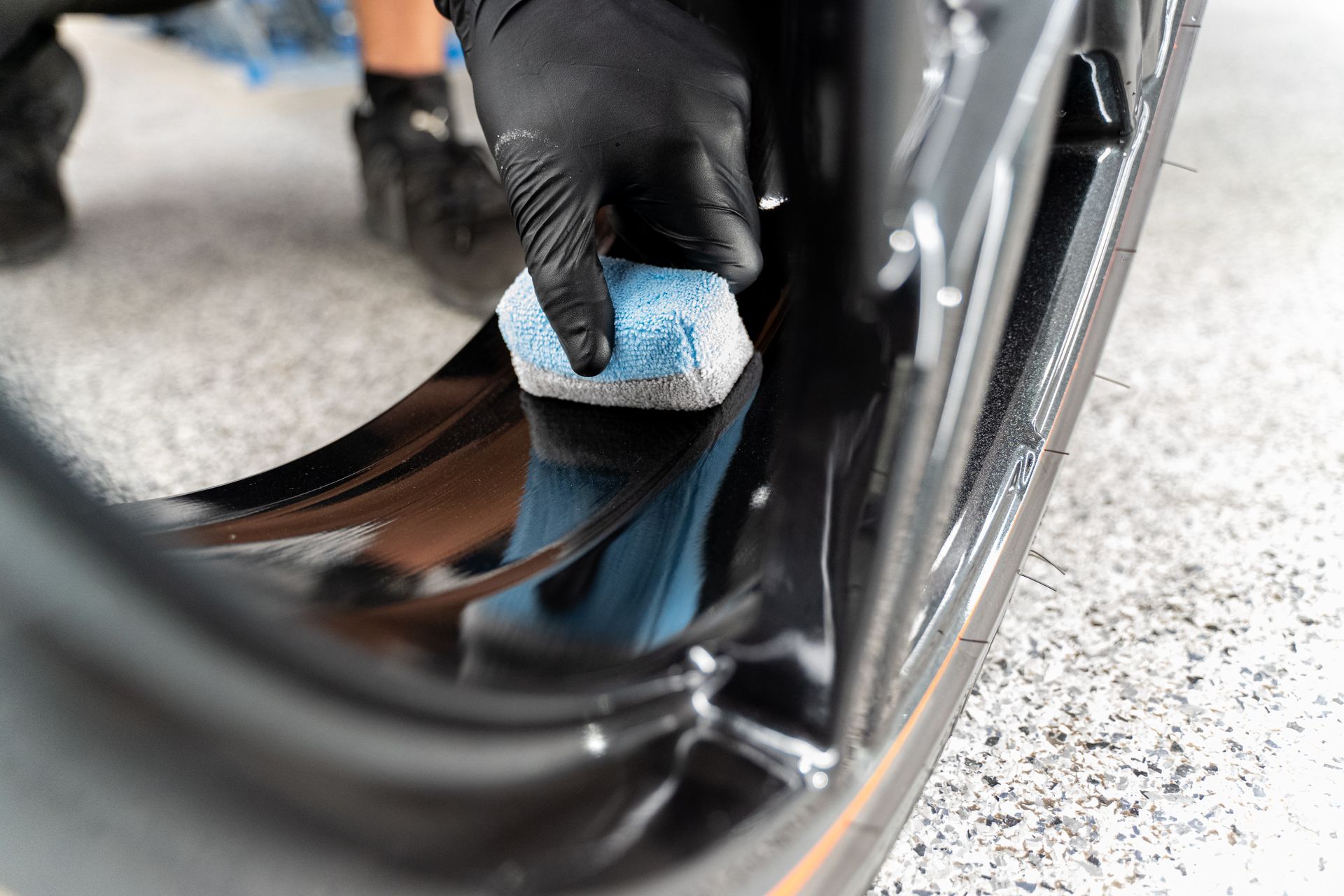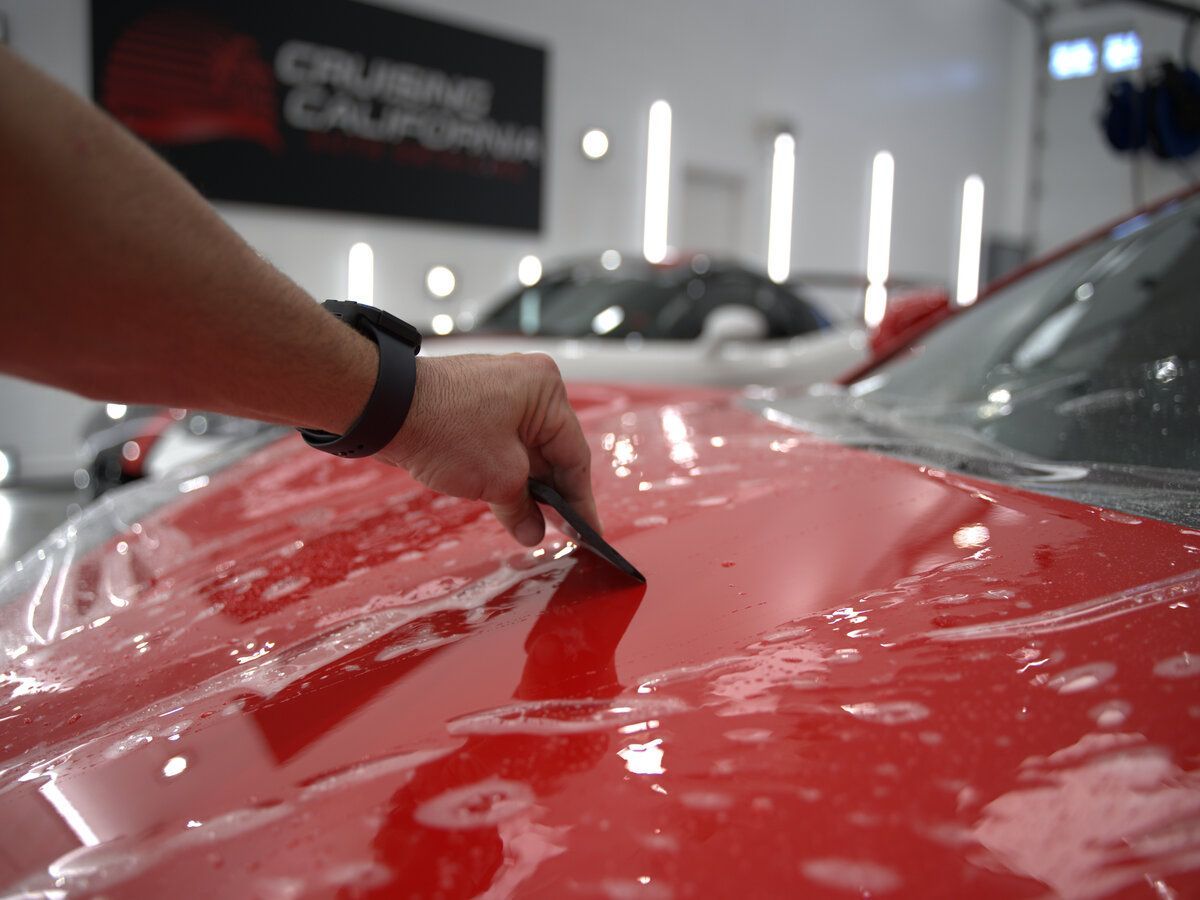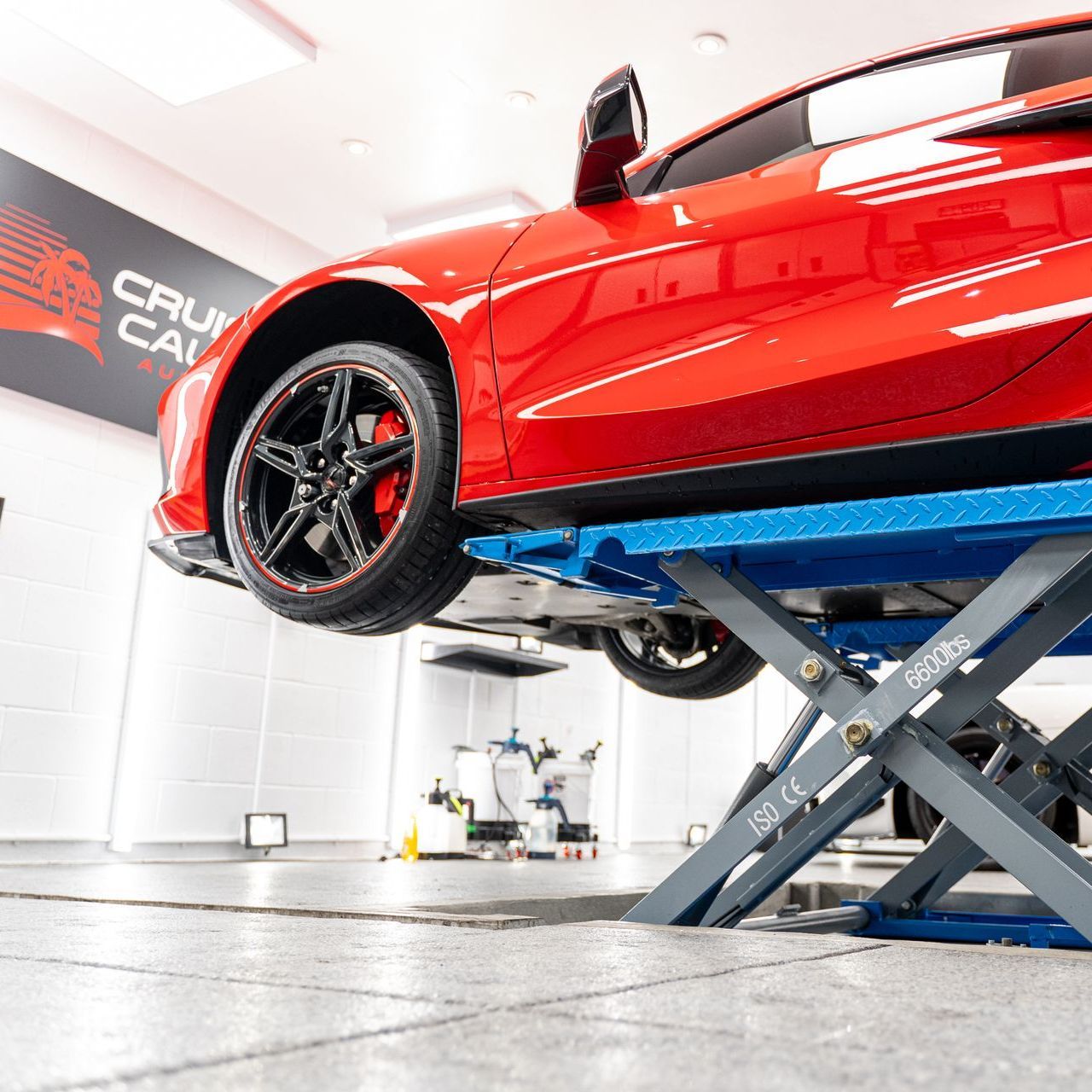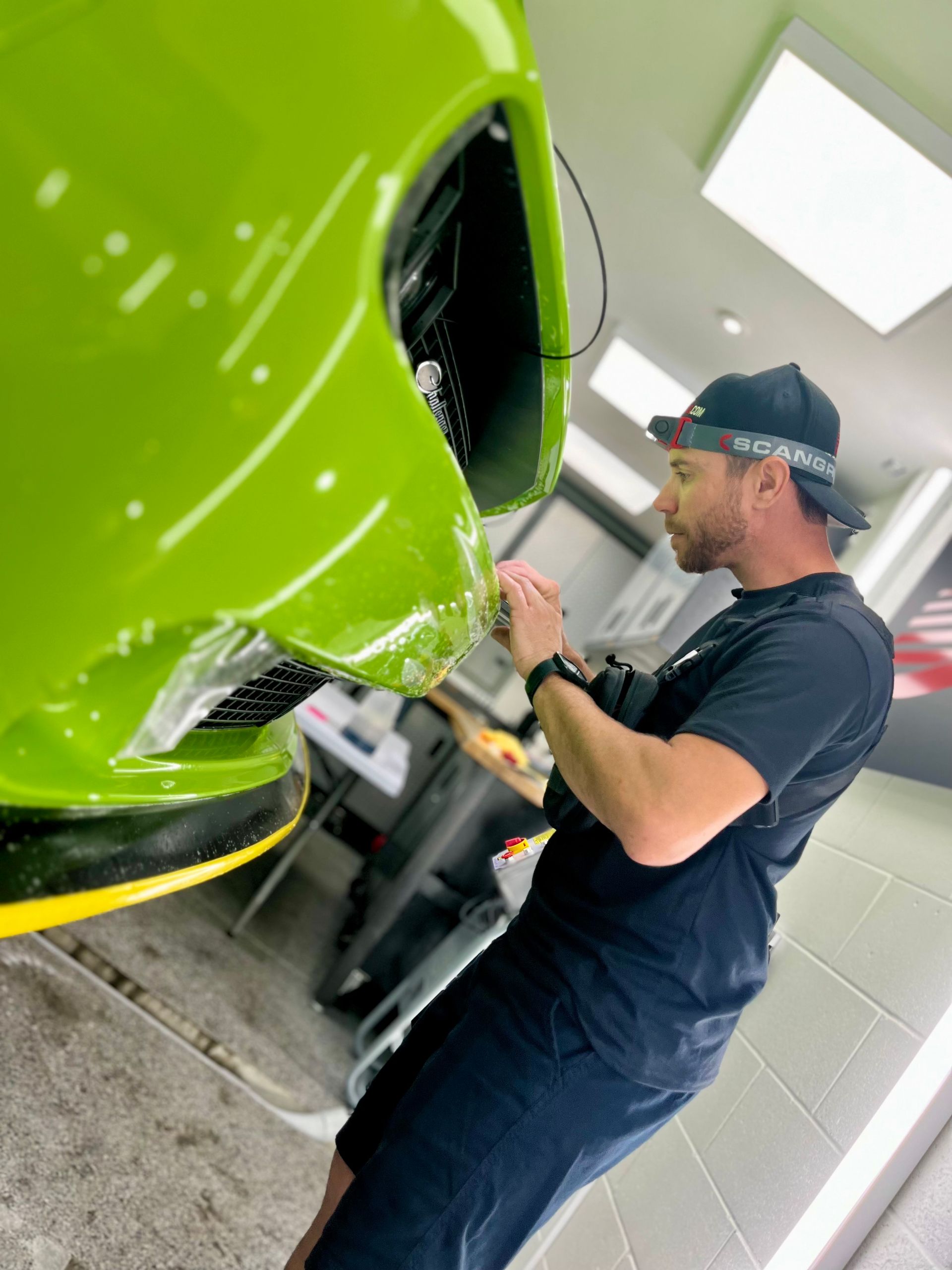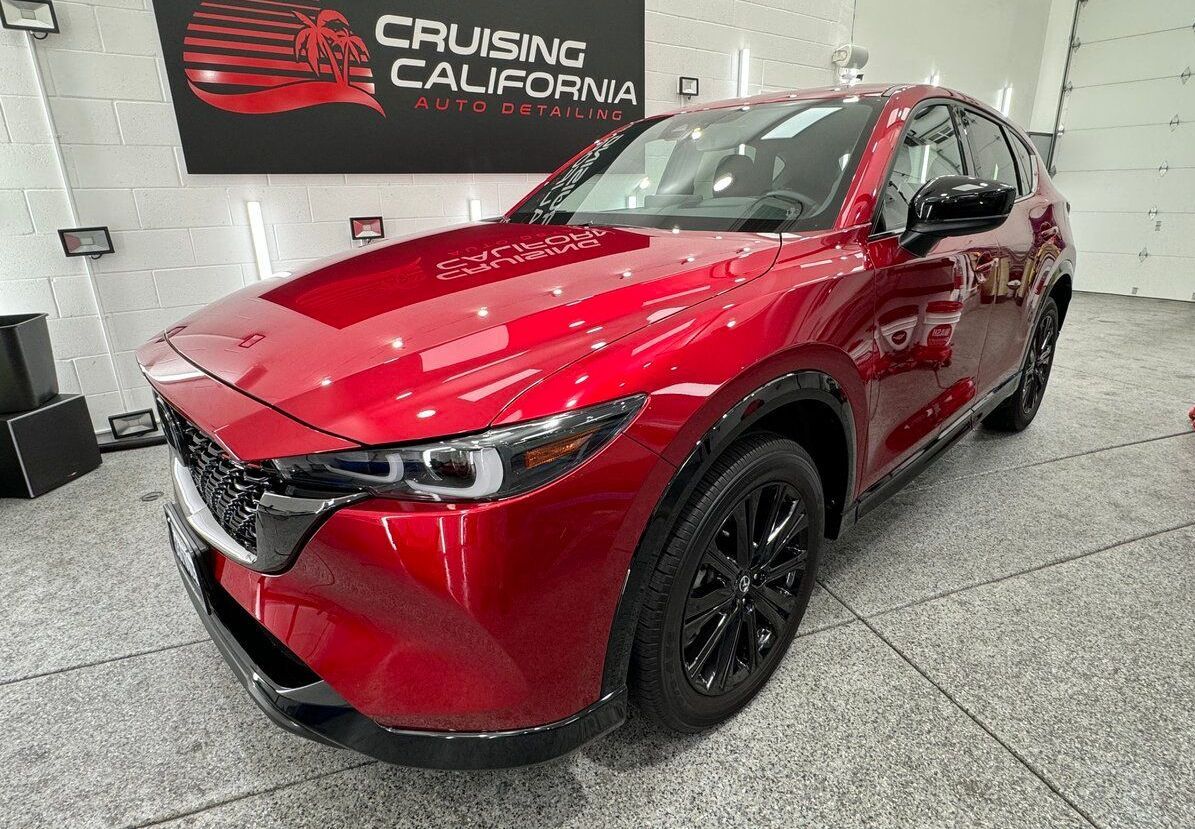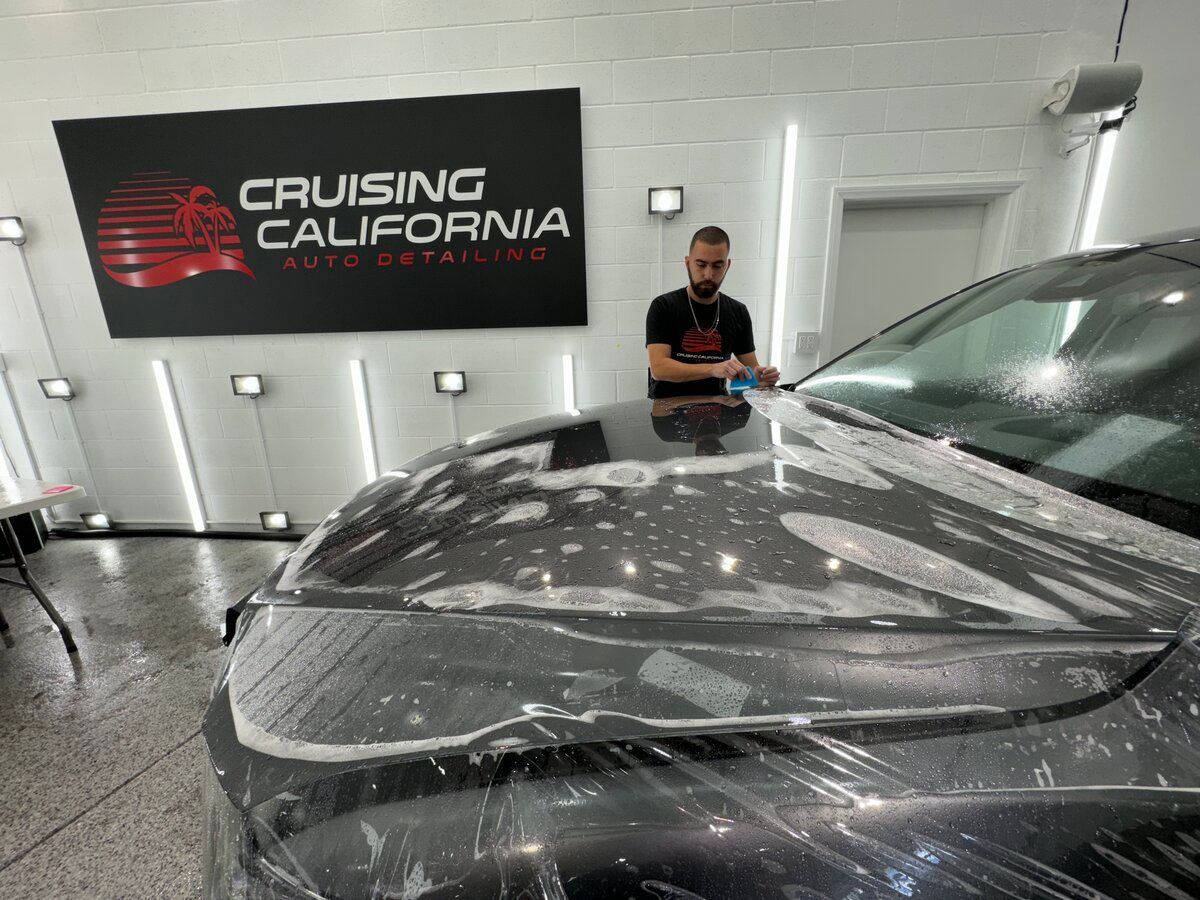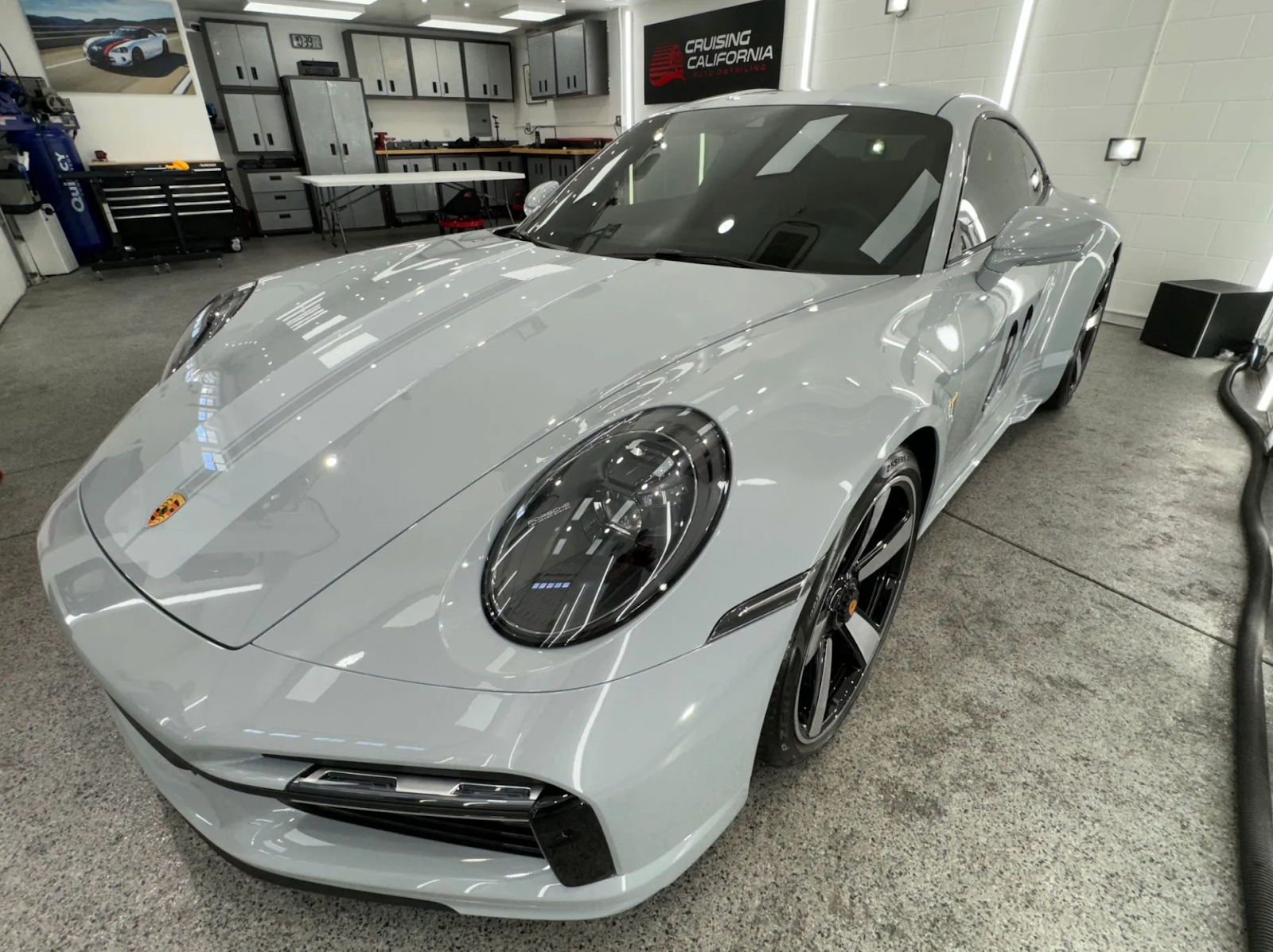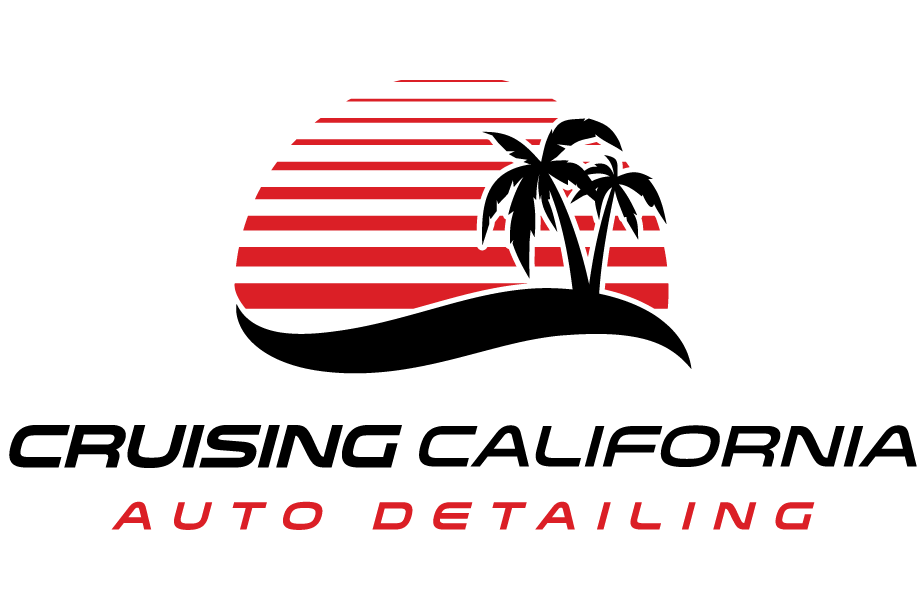Ceramic Coatings: How They Preserve Your Car's Finish for Long-Lasting Protection
Ceramic coatings act as a shield for your car's paint. Tiny particles like silicon dioxide and titanium dioxide mix together to form this solid guard, which keeps water, oils, and other harmful things from sticking to your car. The true magic, though, is how ceramic coatings repel sun rays that can cause real harm to your car's paint over time. Imagine a sunny day with your car glinting in the light and not a single worry about sun damage. Ready to dive deeper? Let's go.
Ceramic coatings act as a protective shield, repelling dirt, grime, and contaminants while providing increased resistance to UV rays, bird droppings, tree sap, and other environmental contaminants. This preserves the car's finish and enhances its appearance over time.
Essential Characteristics of Ceramic Coatings
When it comes to understanding ceramic coatings, we have to explore the science behind them. Ceramic coatings contain silicon dioxide and titanium dioxide, along with other nanoparticles, which form a robust protective layer over your car's paint. This layer isn't just any layer—it's hydrophobic. Now, what do those big words mean? When we say that the ceramic-coated surface is hydrophobic, we're really saying that it repels water, just like a freshly waxed car does; water beads up and slides right off rather than sticking to the surface. This is crucial because the longer water stays on your car, the more likely it is to cause damage by wearing down the paint or allowing contaminants to stick.
Beyond their impressive water repellent characteristics, ceramic coatings also provide UV protection, crucial for preserving your car's paint from sun damage and oxidation over time. UV rays can be really harmful to your car's paint job; they can cause the paint to fade and lose its shine. With a ceramic coating in place, UV protection becomes an ally in maintaining and preserving your car's color brilliance and integrity. It acts almost like sunscreen for your car, creating a barrier against the sun's harsh rays that would otherwise damage its appearance.
By understanding these essential characteristics of ceramic coatings—hydrophobic properties as well as UV protection capabilities—we gain insight into how these coatings play a crucial role in maintaining the pristine appearance and structural integrity of your vehicle's exterior.
Advantages of Ceramic Coatings Application
So, you've decided to go for a ceramic coating for your car. What perks can you expect once it's been applied? Well, here are the key benefits:
Resistance to Environmental Contaminants
Ceramic coatings form a hardened layer over your car's paint, which provides remarkable resistance to the effects of environmental contaminants. The tough protective surface acts as a shield against environmental contaminants like dirt or bird droppings, helping to maintain the glossy finish of your car. Imagine your car's shiny paint as a delicate shell; a ceramic coating wraps it in durable armor that shields against the affects of harsh weather and other damaging effects of the environment. This means fewer trips to the body shop and more time showing off your gleaming ride.
Protection from Harmful UV Rays
The sun is not just something to worry about for your skin; it can also cause serious damage to your car's paintwork. UV rays lead to paint oxidation, causing it to become dull and fade over time. However, with a ceramic coating in place, an additional UV-resistant layer is created, shielding the paint from the damaging effects of the sun's rays. Think of ceramic coating as sunscreen for your car. Just as you'd protect your skin from harmful UV rays, you're also providing that same protection for your vehicle. This extends the life of its paint job and keeps it looking vibrant and fresh for much longer.
Enhanced Resistance to Dirt
Thanks to their hydrophobic properties, ceramic coatings make your car's surface highly repellent to dirt, grime, and other contaminants. This reduces their ability to stick to the paint, making it easier to clean your car and keeping it looking cleaner for longer periods of time. In essence, picture a raincoat effect on your vehicle. Dirt and mud slide off with ease, leaving behind a clean and polished finish. This also means spending less time scrubbing away at tough spots and more time enjoying a pristine-looking car.
Ceramic Coatings for Enhanced Car Aesthetics
Picture a car with a brilliant finish that seems to draw you in. This is precisely what ceramic coatings achieve—they give your car a luminous, high-gloss shine that appears as if it just rolled off the assembly line. The coating isn't merely a superficial addition; it penetrates deeply, heightening the color of the paint and bringing out its vibrancy, leaving the car looking splendid and brand new.
The depth and richness that the coating adds to the paint's color are truly extraordinary. It's as if the colors are more vivid and authentic, not only enhancing your car's visual appeal but also safeguarding the original paint job from fading or dulling due to exposure to the sun's damaging UV rays. For instance, vehicles treated with ceramic coatings often exhibit a "wet look" appearance, almost as if they have just been waxed. This is because the coating forms a protective layer that repels water and contaminants. Such protection ensures that your car's glossy appearance is preserved despite exposure to rain, dirt, and other environmental elements.
Have you ever noticed how water droplets bead up on a freshly waxed car? Ceramic coatings take this a step further by providing even more effective water repellency. This not only contributes to the overall aesthetic appeal but also makes cleaning and maintaining your car's exterior much easier. A superior glossy finish combined with water and contaminant resistance means that dirt and grime are less likely to adhere to the surface of your vehicle, keeping it cleaner for a longer time. This not only makes your car more attractive on a day-to-day basis but also reduces the frequency of cleaning required to maintain its sleek appearance.
Durability and Protection with Ceramic Coatings
Ceramic coatings are like a shield for your car's paint; they offer protection from a variety of environmental factors. But it's not just about looking good; it's about keeping your car protected in the long run. Let's explore the key aspects of durability and protection provided by ceramic coatings.
- Long-Lasting Shield: Ceramic coatings act like a force field around your car, offering protection for an extended period of time. Unlike traditional methods such as waxing or sealants, which may only last a few months, quality ceramic coatings can keep your car protected for 2 to 5 years, or even more, when properly maintained. This means you spend less time on frequent reapplications and more time enjoying the lasting benefits of the coating. The longevity of ceramic coatings provides peace of mind, knowing that your car’s surface is safeguarded against common sources of damage, allowing you to focus on the joy of driving without the worry of constant upkeep.
- Environmental Resilience: Ceramic coatings don’t just protect against dust and dirt; they also shield your car from environmental contaminants such as bird droppings, tree sap, and other acidic substances. These elements can wreak havoc on your car's paint job if left untreated, leading to etching and damage that requires costly refinishing. With a ceramic coating in place, these harmful substances are repelled, safeguarding your car's exterior from potential harm. By creating a strong barrier between these contaminants and your car’s paint, the ceramic coating minimizes the potential for permanent blemishes, preserving the integrity of your vehicle’s finish for longer periods of time.
- Cost-Effective Protection: At first glance, the initial cost of applying a ceramic coating may appear higher than traditional waxes and sealants. However, when you consider its prolonged durability, its cost-effectiveness becomes evident. Instead of spending money on frequent waxing or sealant applications every several months, a single application of a ceramic coating can offer long-term protection, saving you both time and money in the long run. If you plan to keep your car for several years, opting for a ceramic coating proves to be cost-effective over time due to its extended lifespan compared to other forms of protection. This makes it a wise investment, providing durable protection that exceeds conventional methods in terms of longevity and overall value.
The durability and protective capabilities offered by ceramic coatings make them an essential investment in preserving the appearance and condition of your vehicle in the long term.
The Importance of Professional Ceramic Coating Application
In the realm of automotive care, ceramic coating has emerged as a revolutionary solution for protecting vehicle surfaces from environmental damage while providing a glossy finish. While the promise of a DIY ceramic coating kit may seem tempting, opting for a professional application offers numerous advantages that extend beyond mere convenience.
1. Expertise and Experience: Professional ceramic coating applicators undergo extensive training and have years of experience perfecting their craft. They possess a deep understanding of surface preparation, product application techniques, and curing processes. This expertise ensures that the coating is applied evenly and effectively, maximizing its protective qualities and longevity.
2. High-Quality Products: Professionals typically have access to premium-grade ceramic coating products that may not be available to the average consumer. These products often contain advanced formulations that enhance durability, resistance to environmental factors, and overall performance. By entrusting your vehicle to a professional, you can rest assured that it will receive the highest quality treatment available.
3. Proper Surface Preparation: One of the critical factors influencing the effectiveness of ceramic coating is the condition of the vehicle's surface prior to application. Professional detailers meticulously clean and prepare the surface, removing contaminants, swirl marks, and imperfections that could compromise the bonding and durability of the coating. This thorough preparation ensures optimal adhesion and long-lasting protection.
4. Consistent and Uniform Application: Achieving a flawless finish with DIY ceramic coating kits can be challenging, especially for those without prior experience. Professional applicators have the tools, techniques, and precision necessary to apply the coating evenly across all surfaces of the vehicle. This consistency results in a uniform appearance and ensures that every inch of the vehicle receives adequate protection.
5. Warranty and Guarantee: Many reputable detailing shops offer warranties or guarantees on their ceramic coating services. This provides peace of mind knowing that, in the unlikely event of product failure or dissatisfaction, the issue will be addressed promptly and professionally. DIY kits often lack such assurances, leaving users vulnerable to potential risks and liabilities.
While DIY ceramic coating kits may offer a budget-friendly alternative, they often pale in comparison to the results achieved through professional application. By investing in professional ceramic coating services, you not only protect your vehicle but also ensure that it maintains its aesthetic appeal and resale value for years to come. Trusting the expertise of professionals is a decision that pays dividends in terms of both performance and peace of mind.
Top-Notch Ceramic Coating Experts in El Cajon, CA
Ready to give your vehicle the ultimate protection and shine it deserves? Look no further than CCA Detailing & Ceramic Coating | PPF, your premier destination for
top-notch ceramic coating experts in El Cajon, CA. Our team of skilled professionals is dedicated to delivering unparalleled results, using industry-leading techniques and premium products to ensure your car looks its best for years to come. Don't settle for anything less than excellence – schedule your appointment with us today and experience the difference firsthand! Call us today at
(619) 916-6157!

